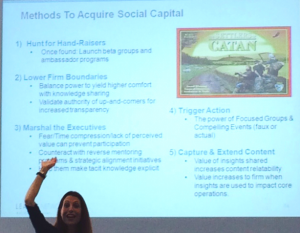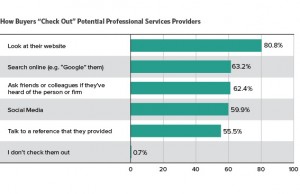Just about every business owner wants to grow. Who doesn’t want to earn more money or build something successful? Scaling and growth aren’t necessarily the same thing.
Is your goal to simply make more money? If that’s the case, you might be happy keeping your operation small, keeping expenses low, while increasing your rates and evolving your services to keep pace with change.
If your goal is to build something bigger, you’ll need to have a plan in place–a vision for where you want to be in the next five, ten years and a general sense of how you’ll get there.
How will you diversify your revenue streams? What’s the smartest way to reinvest your profits? Will you pursue investor funding?
Over the past seven years, I’ve learned a lot about how to scale a business. Here, I’ll go over the key things that have helped us scale to $ 1M in monthly revenue and beyond.
Focus on Profit Margins
When you only have a few clients, achieving profitability is likely your first priority. That $ 2,500, $ 5,000 a month is either going straight into your pocket or it’s getting reinvested back into the business.
If your goal is to scale a business, you’ll need to carve out a predictable margin, a percentage left over after you’ve paid yourself and any other related costs.
You can calculate your profit margin using the following formula: Profit Margin = Net Profit/Net Sales
In other words, you’ll divide the total profit you have left at the end of the month by the total amount you sold during that same period.
Let’s say your business is pulling in $ 10k every month. In this case you might set a target margin of 10% or 20% and use that as the foundation of your business model. So, initially, you’re working with $ 1,000 or $ 2,000 in profits each month.
While a lot of things change as you scale, that ratio should stay the same.
If you look at our company, now, we’re bringing in $ 1M in recurring revenue each month, but we’ve kept that same model in place since the beginning.
Sure, you can do a lot more with $ 100,000 than $ 1,000, but scaling can’t happen all at once.
Having that predictable ratio allows you to invest what you have in improving your situation whether you’re bringing in $ 1,000, $ 10,000, or $ 1M a month.
What Can You Do to Improve Your Margins?
- Audit Everything. You’ll want to analyze your expenses, making cuts where possible. I don’t mean you should slash everything, wholesale, as businesses need to spend money to make money. However, it’s vital that you keep an eye on your finances to ensure all funds are being put to good use. Can you automate routine tasks? While investing in automation tools might feel hard to justify, it could help you save money and time in the long run.
- Focus Marketing Dollars on What Works. How much are you paying per customer acquisition? Reduce marketing spend by looking at your most profitable customers, then focus the bulk of your ad spend remarketing to those groups and targeting lookalike audiences.
- Increase Prices, if Possible. Identify which items bring in the highest profit margins, and as well as those that don’t seem to be worth the trouble. Where can you increase prices to ensure that your profit margins hit your target?
- Embrace “Class Tracking.” Class tracking is a tactic that involves looking at different parts of your business as a separate entity, each with its own revenue and net income. This allows you to quickly identify struggling products/services and look for ways to improve their margins or remove them from your business model.
How to Scale a Business Without Investor Funding
Full disclosure, I’ve never taken investor money, instead, we’ve always been really intentional in how we reinvest our profit margins and have always sort of earned our way to the top. There are pros and cons to both approaches, to be sure.
However, it’s worth noting that the predictable cash flow generated by keeping your target ratios in place are super important when you don’t have an extra $ 5M or $ 10M to fall back on. It also means you have to get strategic about how you reinvest the money you set aside.
One of the most important things to think about while scaling is how can you offer your product/service to more clients without committing more resources to that initiative?
Here are a few things to consider:
- Don’t Hire Too Fast. If you have an online content company, you can only serve so many customers yourself. At a certain point, you’ll need to hire more people to take on the extra work. However, that choice will likely tank your profit margins. Instead, you might focus on offering consulting services or offering online courses that don’t require the extra hands on deck. Later, the revenue generated from those efforts can be used to build your team.
- Make Sure You Plan for Growth. Growth alone won’t solve your cash flow problems. As you scale, you’ll need to plan for any growth initiatives–forecasting not only for the costs associated with materials, labor, and marketing but the time where you’re investing resources into a project that doesn’t drive profits.
- Be Sure All Ideas Match Up With the Big Picture Goal. Keep your scaling strategy simple, focusing on one initiative at a time, and making sure that it aligns with your end-game goal. Consider whether launching a new app or service will get you a step closer to that goal or it’s a distraction. Will it add value to your customers? Attract new users?
Scale a Business by Pursuing Multiple Paths for Growth
As your business starts to grow, you’ll need to diversify, or well, die.
A lot of companies see this amazing growth early on, but fizzle out when the competition heats up or they’ve run out of leads within their niche market.
A few things to think about when
- Uncover the Opportunities in Your Data. Your website traffic, social platforms, behavioral insights, support tickets, and service requests–all contain valuable data. Use social listening tools to find out if customers are searching for something that you might be able to offer. What topics are trending in your industry?
- Look for Ways to Extend Your Current Services. Expansion doesn’t only mean tapping into new markets and rolling out new product lines. It’s also about adding more services that deliver value to your existing customers. If I start a content marketing business, that might mean expanding beyond text-based content and rolling out services like video, podcasting, and PPC management.
- Identify Low-Cost Ways to Expand. Look toward creating new revenue streams with minimal overhead. Monthly subscriptions, digital assets, and online courses can all help you secure a predictable income.
Bottom Line: Always Keep an Eye on the Big Picture
When you first start a business, it can be hard to plan for the next month, quarter, or year–much less develop a five or ten-year plan detailing your rise to global domination.
Early on, it’s all about hitting the ground running.You’re operating on little sleep, hustling to find clients, and bring in more revenue. But, looking back at my own experience; mistakes, wins, and lessons learned, keeping that big picture perspective is really important.
While I do sometimes wish I applied a marathon mentality to the process of scaling my business, I don’t know if I’d be where I am today if I didn’t treat it like a sprint.
In the end, if I had to do it all again, I’d think bigger and scale faster.
Business & Finance Articles on Business 2 Community
(86)
Report Post






